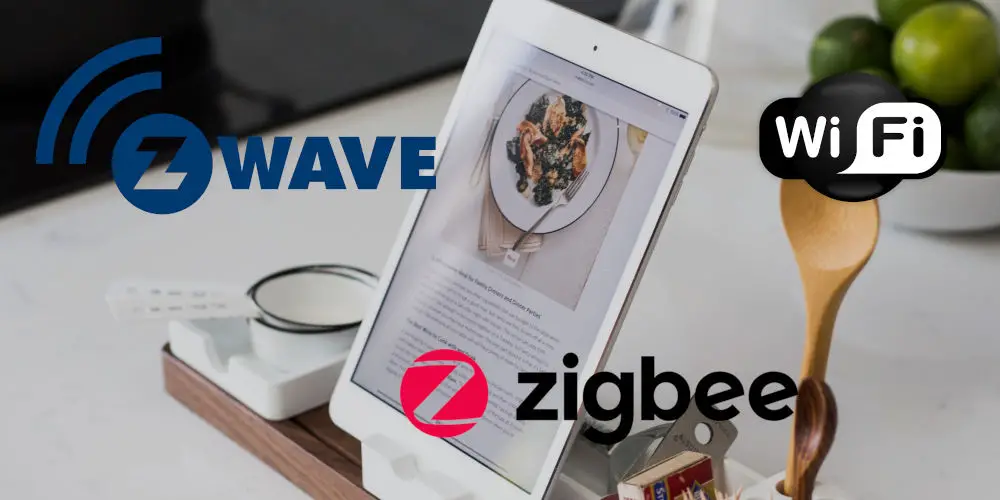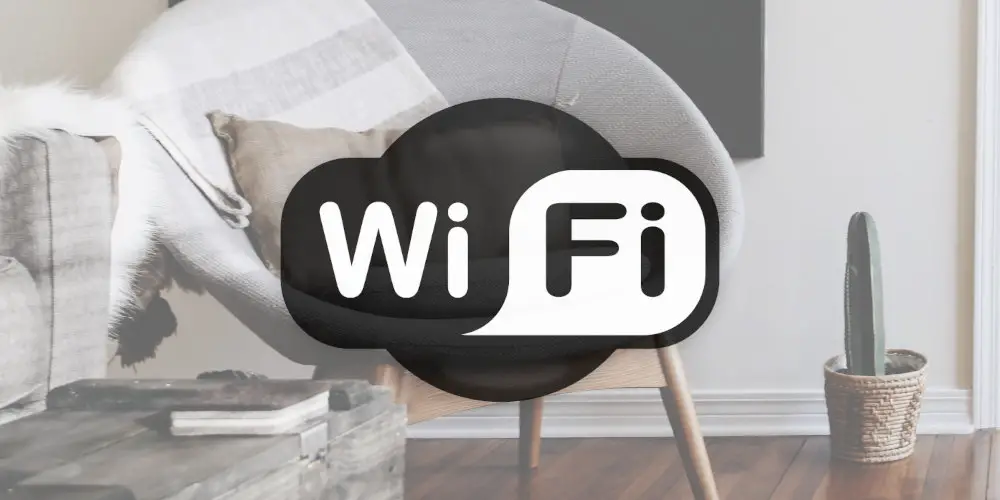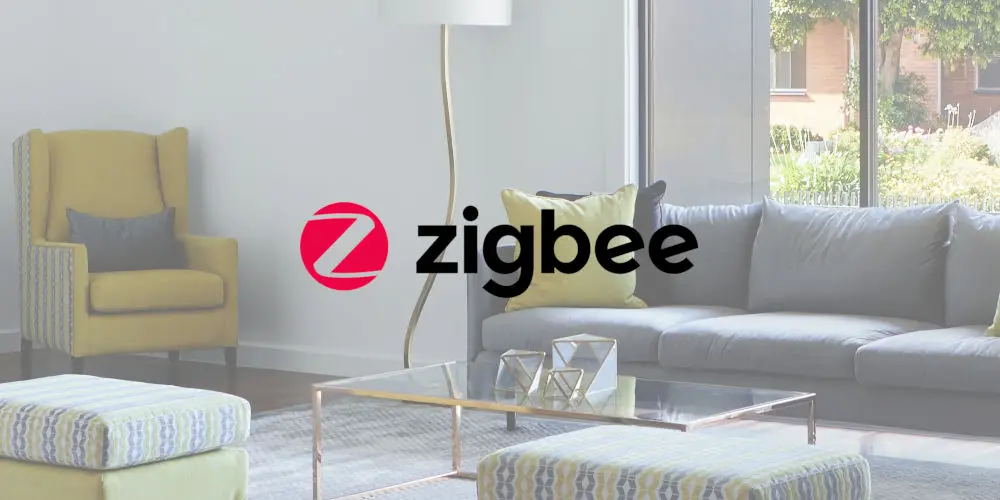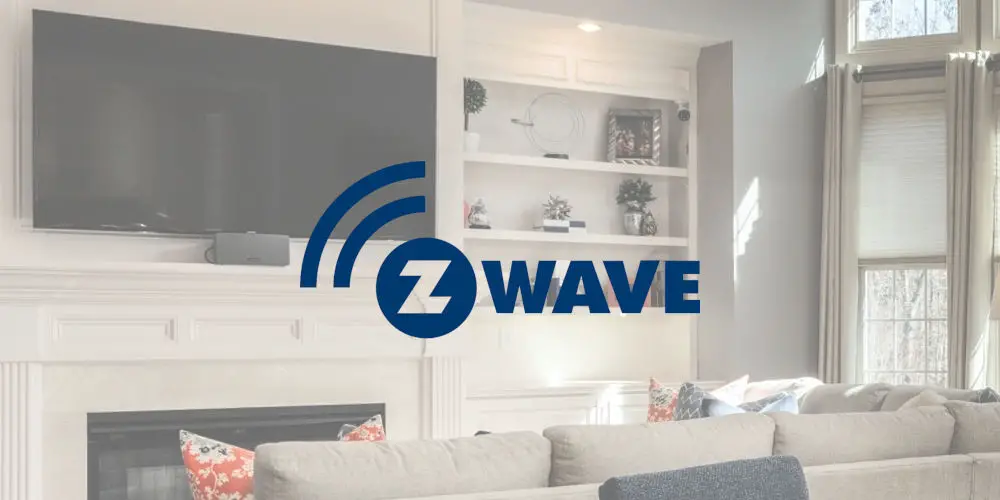Wi-Fi vs Zigbee vs Z-Wave: Which is best?

During this golden era of DIY home automation, three communication protocols have emerged dominant. Comparing Wi-Fi vs Zigbee vs Z-Wave is a tricky business as each offers something unique. And, of course, all three have their downsides too.
Some feel that Wi-Fi is such a strong contender that the others don’t matter so much. Not so fast! The picture is far more complicated. So before you bin your Z-wave home automation devices or your Zigbee equipment, you’ll want to read our comparison of the three.
Come with us as we explore Wi-Fi vs Zigbee vs Z-Wave and delve deeper into different smart home communication protocols.
What is Wi-Fi?

Operating on a 2.4 GHz network communication standard, Wi-Fi uses radio frequencies to create efficient network connectivity. Adding Wi-Fi to your home involves installing a router, which establishes a local network.
Your smart home devices then connect to this network, allowing them to easily communicate with other smart home devices as they are all connected to the same network. A downside to this approach is the more devices on a Wi-Fi network, the slower it runs.
Unlike Zigbee or Z-Wave, Wi-Fi doesn’t create a mesh network where signals are repeated. And so, every device must be in the range of the router to work.
Another issue is Wi-Fi requires a lot of battery power to operate. So you’ll need to replace batteries sooner than if you used Zigbee or Z-Wave devices.
What is Zigbee?

Developed in 2003, using Zigbee home automation continues to grow in popularity. The Zigbee standard operates on the IEEE 802.15.4 physical radio specification. It uses unlicensed bands including 2.4 GHz, 900 MHz and 868 MHz to send and receive signals.
The protocol is designed to be used with low-cost, battery-operated devices. It allows devices to communicate in a variety of network topologies. As a low-powered system, it can offer a battery life lasting several years.
Zigbee and Z-wave are similar as both use low-power mesh network technology which means devices send and receive signals. As each device act as a repeater, signals remain strong throughout the network.
As the technology has developed, Zigbee has looked to enforce certain standards to ensure the interoperability of devices. The latest version, Zigbee 3.0 offers impressive interoperability that was missing from previous versions.
What is Z-Wave?

Dating back to 1999, Z-wave was first developed by Zensys. Over the next decade, it became highly popular. The idea behind Z-wave was to enable a large number of devices to communicate with each other as a single network. At the start, it was primarily used by industry.
Z-Wave is a low-power mesh network technology that operates in the range of 800-900 MHz band. In the last two decades, Z-Wave has become one of the largest home automation protocols, having been adopted by Samsung, Philips, Yale and many other household names.
Due to its use of a lower frequency, Z-wave has the greatest non-line of sight range. However, it sacrifices bandwidth to achieve this. That said, the slower data transmission rate does not significantly impact the tiny messages sent by the devices on the Z-Wave network.
Does each offer different applications?
What makes comparing the three difficult is that they all offer a similar outcome, just they use a unique method. All help you take control over every aspect of your home from security, temperature, lighting and audiovisual.
For many, the objective becomes finding the ideal system that matches their requirements and operates in a way that is user intuitive. Sadly, some home automation systems aren’t user friendly and many entry-level systems only offer a limited product range.
How open are the protocols?
Z-Wave
Z-Wave is now owned by Silicon Labs who control the Z-wave chip used in devices and the protocol. That said, it still can be considered an open protocol, unlike Control4, for example, as any manufacturer can apply for a license to use the technology.
Each manufacture agrees as part of the license to comply with the strict criteria set out by Silicon Labs. Due to the nature of this arrangement, Z-Wave technology is unique amongst the smart home ecosystem.
As Z-wave was initially developed in Europe, it uses different frequencies depending on the country. For example, In the USA, devices use 908 MHz while in Europe, 868 MHz is used.
Zigbee
Zigbee is completely different as it’s an open wireless standard that operates on the 2.4 GHz frequency band. Any manufacture can implement Zigbee in their devices without needing to follow any strict rules such as those set out by Silicon Labs.
However, this can lead to implementation issues due to non-standardisation that aren’t present with Z-Wave. You might end up with a headache if trying to integrate multiple Zigbee products from different manufacturers.
Both Zigbee and Z-Wave are mesh networks that expand the signal range by transmitting information from one device to the next. In theory, the more devices on the network, the stronger the signal and less likely you’ll experience dropouts.
Wi-Fi
Wi-Fi is again totally different. As an open protocol that available (almost) everywhere, it can be implemented by any manufacturer. The majority of smart devices use it due to the low cost of implementation. The protocol itself has stringent rules for communication with the network.
Wi-Fi devices only communicate directly with the closest access point and don’t relay information between the connected devices. That said, Wi-Fi devices do use two-way communication, allowing the user to check the status of any device.

How reliable is each protocol?
No discussion of Wi-Fi vs Zigbee vs Z-Wave or any home automation protocol for that matter is complete without covering reliability. And as each of these protocols are quite different, it’s a worthy discussion.
Compared to Wi-Fi, both Zigbee and Z-Wave are comparatively lightweight protocols. So, you can expect less data redundancy in Zigbee and Z-Wave. As these protocols transmit less data than Wi-Fi, devices have an increased battery life.
Both Z-Wave and Zigbee have a low fault tolerance, which can cause issues if you’re running hundreds of devices on the same system as excessive traffic can disturb the entire network.
Wi-Fi can also suffer from bandwidth issues if too many devices are on the same network leading to slow response times and a greater likelihood of dropouts.
As wireless protocols, one element is consistent across the three. They work best in modern homes with thin walls, which allow wireless signals to flow freely.
For example, If you live in a stone cottage from the 16th century with metre-thick walls and already have Wi-Fi dropout issues, then you’ll need to use a wired protocol to ensure reliability.
What products are available?
At first glance, it’s easy to wrongly believe that all three protocols are equal as each offers a sizeable product range. With a clearer idea of how Wi-Fi vs Zigbee vs Z-Wave compare, you choose the ideal system rather than attempting to get different products to work nicely together.
You can automate every area of your home with any of our three protocols. For example, you can control lights, blinds/curtains, boiler, radiators, gates, TVs, swimming pool and much more.
Using Wi-Fi, you can control your lights using Amazon’s Alexa. Simply, replace your bulb with one from Philips Hue and link the two devices together. It couldn’t be easier.
With Z-Wave, for example, you can use a Fibaro home automation system to remotely control your home via Wi-Fi.
Just imagine, as you leave work, you push a button on your smartphone, then your home automation system turns on a hall light, increases the temperature and switches on the TV.
All of this and more is possible with Z-Wave, Zigbee and Wi-Fi. That said, some systems are easier to work with, especially if you’re designing a complex smart home.
Do some devices support all three protocols?
Due to the universal acceptance of Wi-Fi, it’s the only one of our three is that is supported by Amazon, Google and Apple. To get Z-Wave or Zigbee to work with the big three tech giants, you’ll need to use an additional piece of gear such as a hub that supports multiple protocols.
You could use a Samsung SmartThings hub as this supports both Z-Wave and Zigbee while using Wi-Fi to allow remote control of the system. another option is Athom Homey Pro which supports seven wireless protocols (IR, Z-Wave Plus, Zigbee, Wi-Fi, Bluetooth, 433MHz, 868MHz).
Z-Wave offers far more options as a wider range of brands are licenced to use the technology. The current product count is over 3,000. Several manufacturers produce Z-Wave hubs, including Vera and Fibaro as well as a specially designed RaZberry PI.

Choosing the ideal one for you
As each of the protocols are quite different, it can be hard to choose between Wi-Fi vs Zigbee vs Z-Wave. It can be difficult to weigh the features, advantages, and disadvantages without going crazy or ending up second-guessing yourself.
To narrow down your choice, it’s worth considering the following:
Z-Wave
If you want to build a complex home automation system that controls multiple elements then Z-Wave is ideal. Also, as all products with the Z-Wave chip can be easily integrated into a system, you shouldn’t experience too many headaches.
Z-Wave is also a superb choice as devices form a mesh network that promotes a strong signal across it reducing the likelihood of dropouts.
Zigbee
Also forming a mesh network, Zigbee is a good option for automating a single function in your home or only using products from one manufacture, unless you invest in the Zigbee 3.0 protocol.
Due to the lack of standardisation, using Zigbee devices from several different companies can create problems. Each company’s devices will form a separate mesh that can interrupt the entire main Zigbee mesh.
Wi-Fi
As devices only communicate with the router, they do not create a mesh. Plus, the more devices on a Wi-Fi network, the slower it becomes. That said, you can use Wi-Fi to quickly automate a single function such as lights or blinds in a room.
The simplest way to start is with devices that are either compatible with Google Home or Amazon Alexa. Adding devices to either system is easy as you just need to connect the device to your Wi-Fi router. You can then control them using either the Google Home app or the Amazon Alexa app.
So, which is best: Wi-Fi vs Zigbee vs Z-Wave?
Choosing between the Wi-Fi vs Zigbee vs Z-Wave communication protocols can be difficult as they all operate wirelessly and seem very similar.
As both Z-Wave and Zigbee require hubs, it can be tricky to implement either of them. And that’s without trying to integrate products from different manufacturers into a single system. On the other hand, Wi-Fi is the simplest technology and doesn’t require a hub.
Integrating Wi-Fi devices is also painless as many are ready to use once connected to your network.
Settling the Wi-Fi vs Zigbee vs Z-Wave debate involves careful analysis of your requirements and budget. So, research the three protocols fully before investing in one type of smart home technology.




